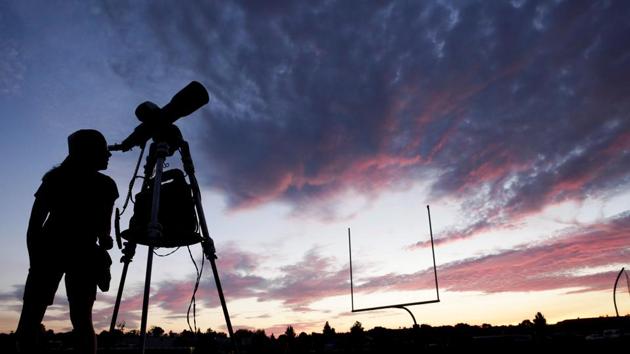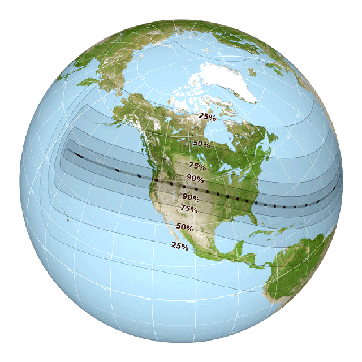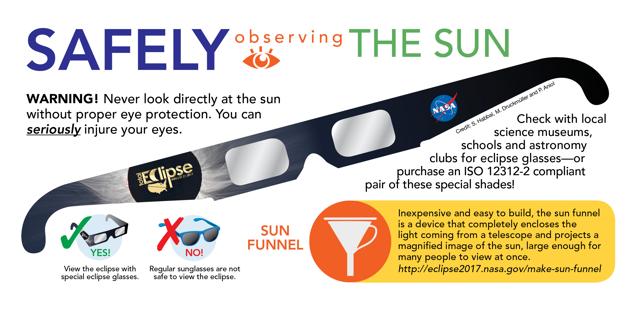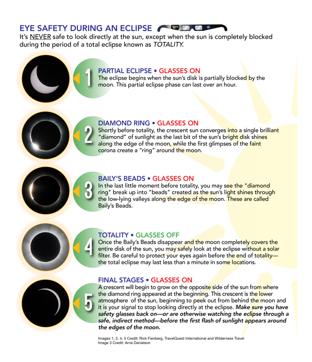Eclipse 101: Here’s what Nasa wants you to know about total solar eclipse 2017
On Monday, when a total solar eclipse sweeps across the United States for the first time in 99 years, people gathering in Charleston, South Carolina, will be the last on the continent to experience it.
Millions are gathering in the US to marvel on Monday at the first total solar eclipse to unfold from coast to coast in nearly a century.

The phenomenon will first appear at 10.15am PDT (1715 GMT) near Depoe Bay, Oregon. Some 94 minutes later, at 2.49pm EDT (1849 GMT), totality will take its final bow near Charleston, South Carolina. The last time such a spectacle unfolded from the Pacific to the Atlantic coast was in 1918.
Here is all you need to know about the phenomenon, according to Nasa (all diagrams taken from eclipse2017.nasa.gov):
“Everyone in the contiguous United States, in fact, everyone in North America plus parts of South America, Africa, and Europe will see at least a partial solar eclipse, while the thin path of totality will pass through portions of 14 states,” the US space agency says in the Eclipse 101 section on its website.
The Earth, moon and sun line up perfectly every one to three years, briefly turning day into night for a sliver of the planet. But these sights normally are in no man’s land, like the vast Pacific or Earth’s poles. This will be the first eclipse of the social media era to pass through such a heavily populated area.

The sun’s disappearing act is just part of the show. As the black orb of the moon gradually nibbles away at the sun’s face, the heavens dim to a quasi-twilight, and some stars and planets emerge.
Shadows on the ground seem to deepen, sunset-like colours streak the sky at the horizon, the air grows still, temperatures drop and birds cease to chirp as they settle in trees to roost.

What is this peculiar phenomenon? Nasa explains: “This celestial event is a solar eclipse in which the moon passes between the sun and Earth and blocks all or part of the sun for up to about three hours, from beginning to end, as viewed from a given location. For this eclipse, the longest period when the moon completely blocks the sun from any given location along the path will be about two minutes and 40 seconds. The last time the contiguous US saw a total eclipse was in 1979.”
NASA and other scientists will be watching and analyzing from telescopes on the ground and in orbit, the International Space Station, airplanes and scores of high-altitude balloons, which will beam back live video. Citizen scientists will monitor animal and plant behavior as daylight turns into twilight and the temperature drops.
For all but the couple of minutes of totality, observers must wear specially designed solar-safe sunglasses or filters to avoid severe eye damage. It is never safe to gaze directly at a partial eclipse with the naked eye.

Here is how Nasa says you should see the solar eclipse: “You never want to look directly at the sun without appropriate protection except during totality. That could severely hurt your eyes. However, there are many ways to safely view an eclipse of the sun including direct viewing – which requires some type of filtering device and indirect viewing where you project an image of the sun onto a screen. Both methods should produce clear images of the partial phase of an eclipse. Click here for eclipse viewing techniques and safety.”

The next total solar eclipse in the U.S. will be in 2024. The next coast-to-coast one will not be until 2045.
Follow Nasa’s coverage at these links:
You can’t witness the celestial event in India, but that doesn’t mean you can’t see it all. Space India is live-streaming the eclipse from the US on August 21.
The eclipse is live streamed from Idaho in the US using a 50 mm f/5 finderscope, a small auxiliary telescope mounted on an Astrotrac tracker -- the main astronomical telescope -- to follow the Sun. The device has a webcam and a solar filter fitted to it, which will enable streaming directly on the official YouTube channel of Space India and on the organisation’s website.
All diagrams used in this story have been taken from Nasa’s webpage



